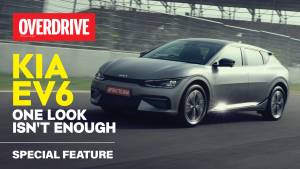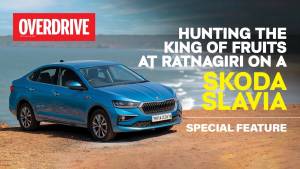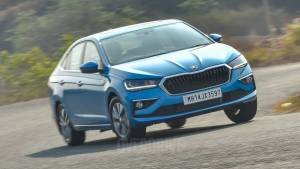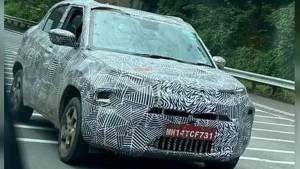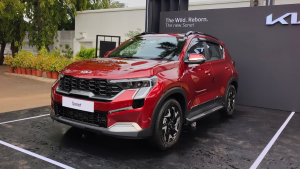Comparison: Royal Enfield Classic 350 BSVI vs Benelli Imperiale 400 BSVI
South India has given the world two icons who've existed since time immemorial. One is Rajinikanth and the other is Royal Enfield. Look closely and you'll see a lot of similarities between them. Both these names have legendary status and are worshipped strongly by their fans and followers. Both these names have innumerable fan clubs, and anything said against them could have serious repercussions.

Much like Rajinikanth in films, Royal Enfield has always had a strong presence in the motorcycle segment. And leading that brigade is the Classic series. An entry-level modern classic that has been satisfying the wanderlust needs and the big-bike aspirations of the country for more than a decade now. Similar to Thalaiva, the Classic is undeterred with its elephant-like presence in the market that also has new-age, tech-savvy motorcycles.

Now, who would dare go against a brand like the Royal Enfield? There are two motorcycle manufacturers who are up for it. One of them is Jawa, a popular vintage brand rebooted by the Mahindra- backed Classic Legends, offering the Jawa, 42 and the Perak in their arsenal. The other brand is Benelli , a name that was once known for its racing heritage but now has its focus on volume-selling motorcycles, thanks to its new owners from our neighbouring country.
Jawa's latest offering is the Perak Bobber, which looks promising in photos and also on the website. However, we, like most of their customers, are yet to see one in the real world, even though it was launched in January 2020, and thus isn't present here. Benelli, on the other hand, has the Imperiale 400 which received a BSVI update not too long ago, and impressed us in earlier road tests. Does it have what it takes to challenge the domination of the Classic?

If looks could thrill
Even after so many years of existence, the Royal Enfield Classic's simplistic design still holds its unique charm and appeal, which is one of its strongest highlights. Some might argue that the Classic's design feels dated when compared to its new-age rivals, but then the Classic's timeless design has always worked for riders from different generations. Similar to the single-cylinder British motorcycles sold in the 1950s, the Classic packs in the bare essentials wherein nothing remarkable has been done to the overall design since the time it was launched. The large round headlight, tiger- eyes position lamps, voluptuous fuel tank, spring-loaded rider's seat and the metallic fenders, everything has been left intact.

However, what has changed are the colour options which includes Stealth Black and Chrome Black. And our bike sported the latter. The eye-blinding chrome treatment on almost every part of the motorcycle might not be to everyone's taste but RE has sold quite a number of them in Tier 2 and Tier 3 cities where the Classic is still considered an aspirational "big" bike.

Park the Benelli Imperiale 400 beside the Royal Enfield Classic 350 and you will realise that the former has something distinct that works in its favour. The muscular proportions of the Imperiale 400 that mimic modern- classics of the higher segment, makes it a more desirable motorcycle to look at. Things like a flatter and wider handlebar, lower seat height and thicker tyres just add to the whole appeal.

The presence of chrome on the whole design is a subjective choice but if you prefer bling, the Imperiale 400 doesn't have much to offer, with chrome highlights on the lights, mirrors and the fuel cap whereas almost every other component has an all-black finish. What I like about the Imperiale 400 is how neatly Benelli has used its larger dimensions. The Jawa Perak Bobber, had it been present in this comparison, could have brought a new angle as it is the only factory-built entry-level bobber sold in India, that does look interesting and unlike anything else in the same price range.
 This Jawa Perak Bobber image is from the unveiling that was done last year
This Jawa Perak Bobber image is from the unveiling that was done last year
Built like a Gun?
When it comes to the build, both the Benelli Imperiale 400 and the Royal Enfield Classic are on par with each other with a similar switchgear quality. However, when it came to the whole motorcycle, the Classic 350 felt better as opposed to the Imperiale 400.

During our testing on the Imperiale 400, one of the footpeg rubbers had slipped off, the fuel tank and the seat showed excessive movement and the crash guard, which we believe was an aftermarket add-on, could not take care of a mild tip-over damaging the heat plate on the exhaust pipe.

Both the motorcycles had not clocked much on the odo. While the Classic 350's long term behaviour in terms of build quality is known to be sturdy in nature, I am curious to find out how the Imperiale 400 ages in our harsh riding conditions over time and countless kilometres. The Classic continues to march on with its all analogue display of the speed, odo and telltale lights for reserve fuel, ABS and engine check. The almost flat position of the speedo makes it inconvenient to check the speed on the move, which gets further difficult with the bright sun hovering over or even during rains.

I'd definitely choose the Imperiale's twin-pod over the Classic as it offers better rideability and has a premium resemblance to that of the Triumph Bonneville or even the Royal Enfield Interceptor 650. Furthermore, the Imperiale 400's unit also offers a digital readout of the trip info, clock, gear indicator and a fuel gauge. But the fuel gauge isn't reliable as it shows inconsistent readout even with a full tank, which makes it undependable on longer journeys.
Where the heart is
Interestingly, much like its design and features, Royal Enfield has still not given up on the kick-start to crank this long-stroke motor, perhaps to appeal to the purists. To comply with the stricter and cleaner BSVI emissions, RE replaced the carburettor with a fuel-injector in the 346cc engine. The power and torque figures have been left unchanged at 19PS and 28Nm. If you have ridden the BSIV iteration, you will immediately notice the reduced vibrations.

While there are many who associate these vibrations with the DNA of the Royal Enfield, justifying it as a characteristic trait, the newer REs are smoother and in turn, will also appeal to those who are upgrading to an RE from a smaller displacement motorcycle. Saying that, rest assured the Classic 350 even with this cleaner state of tune retains its iconic thump. A bit milder though. Undeniably, it has a better soundtrack compared to the less bassy Imperiale 400, which is surprising as Benelli engines are often known for their impressive soundtrack. In fact, the smaller displacement Jawas make a better sound than the Imperiale 400.
![]()
These motorcycles are not meant to launch like how a similar displacement street-naked would. Be gentle with the throttle, and the Classic 350 would start moving with reduced vibrations. While the motor offers enough juice to potter around in city traffic, it is the uncomfortable vibrations that are felt on the handlebar, pegs and the mirrors, that make longer commutes a tiring experience.
In comparison, the Benelli Imperiale 400, with its larger displacement 374cc, offers a linear and smoother response
at city speeds. However, there is a mild buzz on the handlebar and mirrors but feels more refined compared to the
RE Classic 350. What I liked about the Imperiale 400 over the Classic 350 is how effortlessly the former builds speed from the low- to mid-range, which makes it a better commuter comparatively. Further, even the roll-on acceleration performance of the Imperiale 400 feels much better as compared to the Classic 350, which offers more confidence while overtaking. In case of the Classic 350, you have to plan the overtaking manoeuvre well in advance before actually executing it, as the engine feels stressed and vibey at higher revs also forcing you to downshift.

The Classic 350's motor feels settled at speeds of 85-95kmph and can do a further 100kmph on open stretches of roads. The Imperiale's engine on the other hand comes to its element between the 4,000 to 5,000rpm range wherein you are effortlessly cruising at speeds of 110kmph, without any vibrations. The cruising speed of the Imperiale 400 isn't much higher than the Classic 350 but the former's smoothness at those speeds makes it the better option of the two.
A quick look at our comparison sheet reveals the Imperiale's better city and highway fuel efficiency figures. However, it comes with a 12-litre fuel tank as compared to Classic's 13.5-litre which offers an overall range of 350km-400km on the Imperiale versus 365km-415km in case of the Classic 350. Both motorcycles come with a 5-speed gearbox, but it is the Imperiale's reasonably smooth and precise unit, paired with a lighter clutch, which comes in handy during frequent shifts. For reference, the Jawa Perak's 334cc engine makes 30.6PS and 32.7Nm, which makes it the most powerful entry-level modern classic.

Moving on
The difference between the Classic 350 and the Imperiale 400's chassis setup is that the former has a single-downtube versus the double-cradle frame of the latter. The Classic's setup offers a decent ride over uneven roads and bad surfaces but then on potholes, it feels a tad on the firmer side. Riding the Classic 350 in the city doesn't take much effort, and the motorcycle can be manoeuvred through traffic or bylanes without much effort.

The Imperiale 400, on the other hand is larger, and heavier by 13kg, and has a bigger turning radius, demanding more muscle to move around. The other irritating bit about the Imperiale 400 is that the centre stand scrapes on almost every speed breaker, even with a higher ground clearance of 165mm as compared to the Classic's 135mm, which is due to concentration of the mass in the central area along with the longer wheelbase. On the highways, it is the Imperiale 400 that takes the lead with its better capability to gulp down the differences from bad and broken surfaces. Add to that the large well-cushioned seats, which feel just right when you want to do longer hours on the saddle as compared to the Classic's seat that is far from being comfortable.

Agreed, the Classic is one the most preferred motorcycles to chart the difficult terrain of Ladakh but personally, I'd prefer a more capable and comfortable Himalayan to do that. But then as soon as you hit the twisties, there is a clear winner there, the Royal Enfield Classic 350. While the Imperiale 400 with its longer wheelbase can be happily cruising all day long, on a series of turns and curves, you realise that the front-rear suspension setup has a disconnected response. The front is tuned towards a softer setting while the rear has a firmer feel.
![]()
The riding stance of the Imperiale 400 paired with the sticky MRF tyres might give you that confidence but it is the Classic 350 that actually takes the corners with a light-foot and a firm grip. Both the motorcycles are offered with dual-channel ABS, but the one on Classic 350 comes with more feel and bite as compared to the Imperiale 400 which offers a spongy response and requires more effort with the full press of the lever. The Jawa Perak weighs the lightest compared to the Classic 350 BSVI and the Imperiale 400 BSVI at 175kg.

Final call?
You will realise that both, the Royal Enfield Classic 350 BSVI and the Benelli Imperiale 400 BSVI aren't very different from each other. Both come with their own set of pros and cons and at the same time offer their unique features and traits to appeal to their target audiences. However, there is a big difference between these two brands, when you consider their presence in India.

On one hand, you have a brand like Royal Enfield that enjoys a strong presence across the length and breadth of the country and has existed since eternity whereas Benelli India, in its six-year long tenure, has undergone two ownership changes and is far from challenging RE's network numbers. The importance of which can be realised when you are in need of support at a remote location and chances are that an RE garage could be in close vicinity. Furthermore, the Classic 350 BSVI is priced at Rs 2.20 lakh, on-road Mumbai, which makes it Rs 30,000 more affordable and a more practical buy over the Imperiale 400 BSVI at Rs 2.53 lakh, on-road Mumbai. While the heart could beat more for the Imperiale 400, the thump of the Classic will continue to resonate with dominance. Where is the Jawa Perak? Funnily, that's an often asked question by many. In terms of pricing, at Rs 2.30 lakh, on-road, the Perak is positioned above the Classic 350 and the Imperiale 400.
However, there are two new entrants in the 350cc modern classic space. First is Honda's all-new roadster, the Highness CB 350 - a motorcycle that has been primarily designed and developed to take on the popularity of the Royal Enfield Classic 350. Second is the Royal Enfield Meteor 350, which is RE's replacement to the Thunderbird X that is aimed at riders upgrading from commuters and smaller displacement motorcycles. If you are wondering why did we not include these two in our comparison, these motorcycles were launched recently and Honda 2Wheelers India still does not have a media bike to loan it to us. As and when that happens, there should be a detailed comparison of all these entry-level modern-classics pitched against each other. A story for another day then.
Also read,
2020 Honda CB 350 launch: Top 5 highlights
2020 Honda CB 350 launched in India. Details on specifications, features and design
2020 Royal Enfield Meteor 350 road test review
2020 Royal Enfield Meteor 350 launched at Rs 1.75 lakh, undercuts Honda Highness CB 350
2020 Royal Enfield Meteor 350 variants explained: Fireball vs Stellar vs Supernova
Starts Rs 5,50,000
500cc
6-Speed
47.50
46.00
25.64 Kmpl
Starts Rs 1,99,000
374cc
5-Speed
21.00
29.00
35.39 Kmpl
Starts Rs 1,84,374
349cc
5-Speed
20.20
27.00
-NA-
Starts Rs 2,16,648
373cc
6-Speed
40.00
35.00
-NA-
Starts Rs 1,85,000
348cc
5-Speed
21.07
30.00
-NA-
Starts Rs 2,56,372
648cc
6-Speed
47.00
52.00
-NA-
Starts Rs 1,75,000
349cc
5-Speed
20.20
27.00
-NA-
Starts Rs 12,15,800
900cc
5-Speed
65.00
80.00
25.64 Kmpl
Related Stories
Top Stories
Latest Videos
Most Popular
- Maruti Suzuki Fronx Drive Feature: Switch to Plan B
- Ford India to make a comeback in 2025? New-Gen Endeavour design patented in India
- Maruti Suzuki Brezza emerges as the most successful SUV of 2023
- Nissan Magnite EZ-Shift review - is the AMT any good?
- Hyundai Creta facelift bookings open for token amount of Rs 25,000
Network18 Updates





